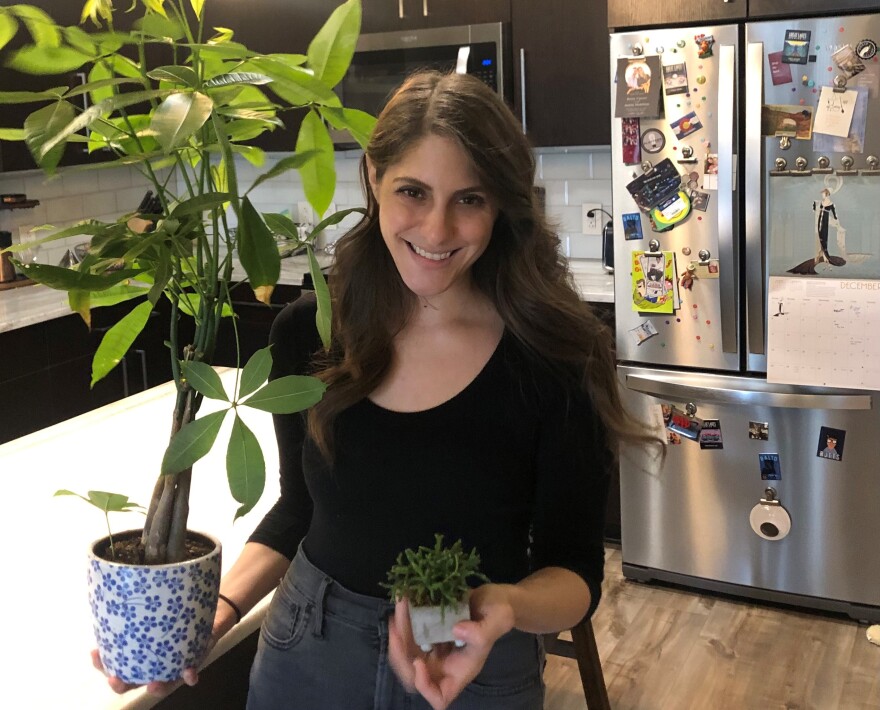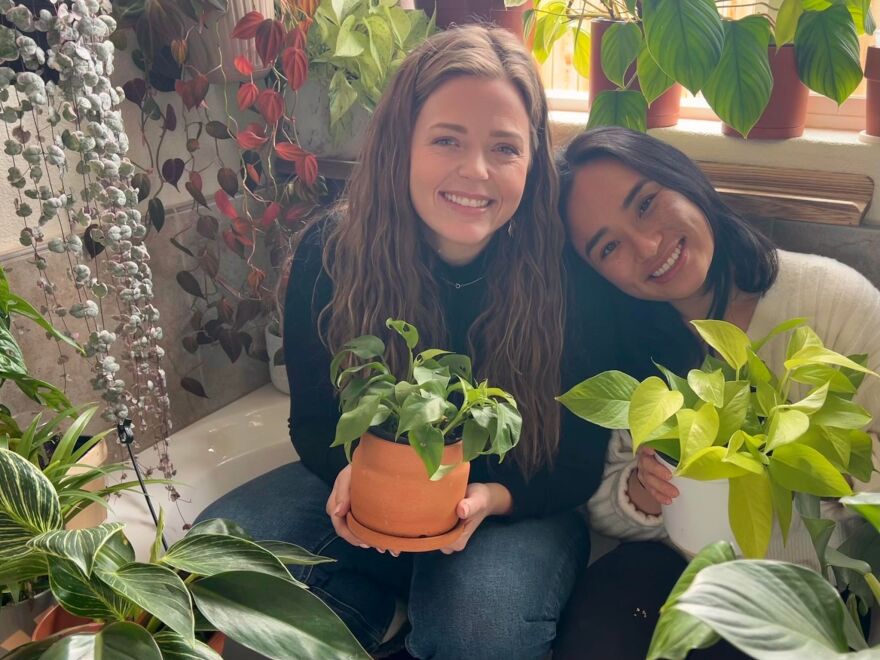Houseplant popularity boomed during the pandemic, particularly due to social media and fueled by Gen Z and Millennials. Some say the greenery is here to stay, including a local TikToker, a plant Facebook group and gardening experts.
Houseplant industry generates billions in U.S. during the pandemic
A handful of Sierra Water plant nursery employees and a spouse unloaded brown boxes and packaged plants from a double-decker van. Everyone is excited – like it’s Christmas. There were hundreds of plants in the shipment, including small spikey succulents, potted plants with big speckled leaves, and some plants with fenestration that looks like the holes in swiss cheese.
Samantha Stremmel started the small business selling outdoor water garden supplies and ponds about 12 years ago. She then transitioned to indoor plants within the last five years. The nursery is located in the artist hub on Dickerson Road in Reno. She says plants have always been part of her life.
“Love having them in my house. My mom had them. I tried having them in college in my dorm room and they died. And just always kind of tried to grow them,” Stremmel said.
When businesses closed early in the COVID-19 pandemic, Sierra Water was allowed to stay open because nurseries are categorized under agriculture, which was deemed essential.
“When we started before COVID, it was good, like people liked plants. And then COVID hit, of course, and it was like crazy,” Stremmel said. “I felt so terrible because all these small businesses are suffering, and the restaurants, and meanwhile, I cannot keep plants in stock.”
The National Gardening Association estimates Americans spent more than $2 billion on indoor plants and accessories in 2021, which is higher than the $1.3 billion estimate in 2019.
“People quit brewing beer, they quit making bread, but they all continued to do the gardening,” said Dave Whitinger, executive director of the National Gardening Association.


Graphic 1: The average spending per household on indoor houseplant gardening from 2018 through 2021
The bar graph indicates the average spending per indoor plant-owning household, with one dip between 2018 to 2021. That includes $49.02 in 2018, $39.48 in 2019, $44.39 in 2020, and $57 in 2021.
The source is the National Gardening Association.
Graphic 2: Estimated total spending (in billions) on indoor houseplant gardening from 2018 through 2021.
A line graph indicates how much American spending on indoor plants and accessories increased, with one dip between 2018 to 2021. That includes $1.7 billion in 2018, $1.31 billion in 2019, $1.67 billion in 2020, and $2.17 billion in 2021.
The source is the National Gardening Association.
Why do Gen Z and Millennials love plants?
The boom in houseplant popularity can be attributed to Gen Z and Millennials. According to the National Gardening Association, 28% of Americans ages 18-44 participated in indoor plant gardening in 2021.
Julianne Mobilian, associate editor of Garden Center magazine, covers retail trends, and she explained why young people like herself gravitate toward indoor gardening.

“With these younger generations, myself included – I’m a millennial – I don’t own a home. And I think a lot of these other people in my age group also don’t own homes. It’s kind of a way for them to carve out a niche for themselves and make their own space beautiful and green, even if they don’t have the typical garden that our parents or grandparents maybe used to have,” Mobilian said.
Mobilian says another appeal is affordability. Nearly a third of households in the U.S. that earn $35,000 to $49,000 bought indoor plants in 2021, according to the National Gardening Association.
“When you get to the larger gardening, it can be a little bit daunting because it is expensive. You have to be really careful about what zone you’re in and requirements, you know, things like that. So I do think it’s a really nice entryway into the gardening world in general,” Mobilian said.
Houseplants aren’t just sought after at home – they’re taking over social media. Mobilian says plant-related hashtags have billions of views on Instagram and TikTok.
“Social media, I think, is partly responsible for the staying power of houseplants,” she said.
Plant content goes viral, young people find plant communities online
Lemon Valley resident Isis Atkins, 22, runs a TikTok called rootboundnursery out of her apartment. She started the account during the pandemic and has more than 23,000 followers, and she shared what she hopes people can gain from her page:

“Rediscovering the love for houseplants or maybe just discovering it in the first place; it’s something that should be shared,” Atkins said. “I hope that people can come to my TikTok account and feel like they’re not ostracized because they killed a succulent. Everyone is welcome and can learn how to be better at it.”
Atkins makes plant care videos and joins in on funny trends, like the best plant for you based on your zodiac sign. She posts 1-to-3 times a day, and one video, showcasing a unique plant went viral with more than one million views, but she doesn’t call herself an influencer.
“I wish people knew that I’m not perfect, and the people who make TikToks about plants don’t have a million plants that are all beautiful and healthy,” Atkins said. “I think that people sometimes forget I’m still also just a person and plants die.”
Atkins says making videos has given her more confidence when speaking in public, though she is aware of how often she’s on her phone. Atkins says her parents don’t quite understand the social media platform but fully support her.
Atkins is also thankful for the plant-loving community she’s been a part of. That sense of community is also evident in a Facebook group called Northern Nevada Plant People. Brittany Santos was new to Reno when she met Kimberly Martin through Facebook Marketplace, which allows users to view and sell their belongings.
“I was selling a plant. It was basically a cactus and I didn’t like it because it was so pointy and it hurt every time I tried to move by it. She messaged me saying like, ‘Hey, I’m interested in this,’ and so I’m like, ‘Oh, you can pick it up at my house.’ Lo and behold, we live in the same neighborhood,” Martin said.

The two wanted to share their enjoyment with others. Now, the group runs itself, with about 7,000 members of all ages who ask questions and offer advice, as well as gift, swap or sell their plants daily.
“I think that’s also why the group blew up because there were other people looking for that sense of community because COVID did take so much of the sense of community away from us,” Santos said.
The pandemic helped kick off the plant craze as people were spending more time at home. It’s unclear what role inflation will play, but many in the houseplant community say the popularity is here to stay.












